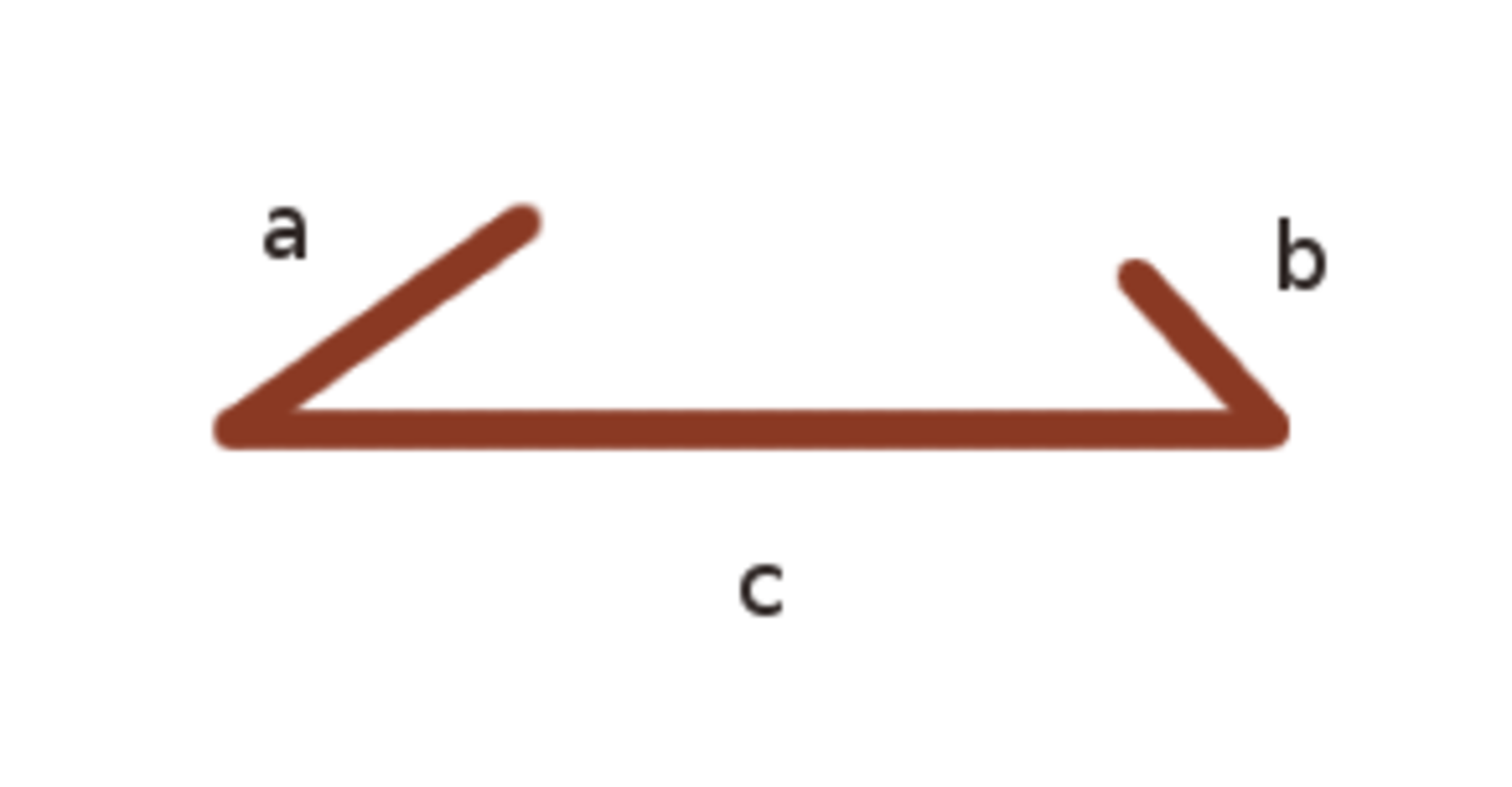Probability of making triangles
Probability
Level
3
A stick of length 1 is divided randomly into 3 parts. What is the probability that a triangle can be made with those three parts?

25%
40%
33.333%
75%
This section requires Javascript.
You are seeing this because something didn't load right. We suggest you, (a) try
refreshing the page, (b) enabling javascript if it is disabled on your browser and,
finally, (c)
loading the
non-javascript version of this page
. We're sorry about the hassle.
Let the stick be divided into three parts having length x , y and 1 − ( x + y )
Sample space:
Constraints: All parts must have length in ( 0 , 1 ) .
This gives: x > 0 , y > 0 , x + y < 1
Favourable outcome:
Constraint: The sides must satisfy the triange inequality.
x + y > 1 − ( x + y ) ⟹ x + y > 2 1
x + 1 − ( x + y ) > y ⟹ y < 2 1
y + 1 − ( x + y ) > x ⟹ x < 2 1
As x and y are uniformly distributed, the probability can be calculated by taking the ratio of the area of the favourable outcome to the area of the sample space when the constraints are plotted in the x-y plane .
The sample space is a triangle with vertices: ( 0 , 0 ) , ( 1 , 0 ) and ( 0 , 1 )
The favourable outcome region is a triangle with vertices: ( 2 1 , 2 1 ) , ( 2 1 , 0 ) and ( 0 , 2 1 )
∴ Required probability= 4 1